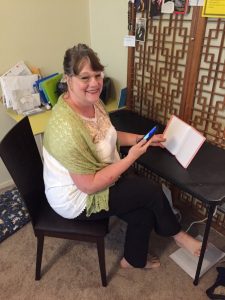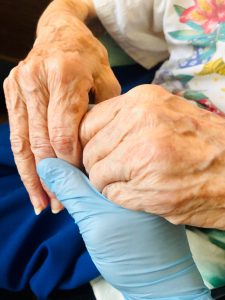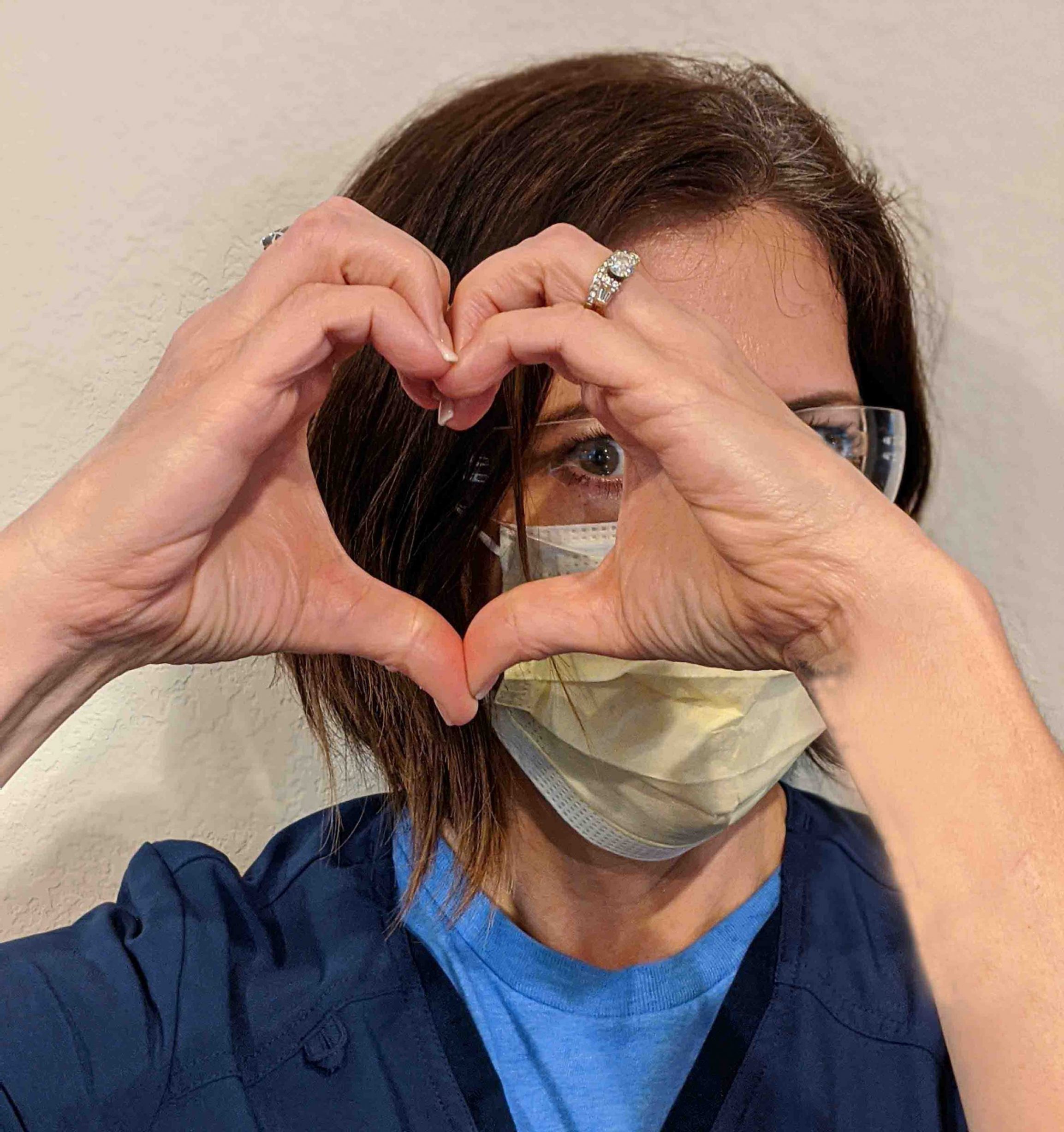One of our patients in a nursing facility used to see his daughter every day. He’s elderly, and almost completely deaf. His Hospice Austin nurse, Sara Templeton, said that though he wears a hearing aid, he can only make out some of what you say if you put your mouth to his ear and yell. Seeing his daughter was the highlight of his day, but of course that ended when his facility had to restrict visitors due to COVID-19.
His daughter would call, but the patient couldn’t hear her. “As the days wore on,” Sara said, “he became more and more withdrawn and was soon just…existing.” Sara wondered how she could help them stay more connected. She brought in a set of high-quality over-the-ear headphones, plugged them into the cell phone, fit them over his ears and called his daughter.
“When he heard his daughter say, ‘Hi, Daddy!’ his face just lit up,” Sara said. “He could hear her perfectly – every word!” Sara now keeps the headphones in a drawer by his bed, so he can speak with his daughter even when Sara isn’t there.

Chaplain Nettie Reynolds records and sends blessings to her patients from her phone.
Sara and our other staff have become the surrogate eyes and ears for loved ones separated from our patients. By necessity, staff is devising new and creative ways to care for patients and their families. Our leadership team and physicians formed a COVID task force before the crisis came to Texas and have been anticipating needs, procuring PPE, setting up online platforms for visits, implementing new regulations, and staying abreast of the constantly changing guidelines from the CDC. Our highest priority is meeting the needs of our patients while keeping our patients, families and staff safe from the virus.
We have developed a COVID-19 Response team trained to exclusively care for patients who have the virus. This allows us to provide the best care tailored to the patients’ needs while preventing potential exposure to other patients. The team is made up of nurses, certified nursing assistants, a social worker and chaplain. They are primarily visiting patients in the home, both in person as needed and virtually.
“It’s incredibly inspiring that this team is willing to ensure everyone has access to excellent end-of-life care,” said Hospice Austin Executive Director Marjorie Mulanax. “It shows how passionate they are in doing this work, which can be difficult at the best of times. They are courageous in every way.”
Many patients without the virus are preferring virtual rather than in-person visits, either through online video-conferencing or phone calls. Chaplain Nettie Reynolds records and sends blessings and prayers on her phone customized for her patients and their families. They already know her voice, and so they can listen to it whenever they need to.
“We’re all trying to figure out ways to support our patients right now,” Nettie said. “I can’t take their blood pressure, but I can lower their internal pressure with a blessing. It’s an intervention, and that’s important clinically.”

Sara Templeton’s patient, holding her hand
Of course, our staff is available for in-person visits whenever it’s needed. Thanks to the generosity of the community, we are well-supplied with masks, gloves, face protection and other PPE.
Nurse Sara Templeton visited a patient recently while wearing all the requisite gear: headcovering, goggles, mask, gloves, gown. When the patient saw Sara, she smiled, grabbed her hand and said, “I know that’s your heart under all that garb!”





